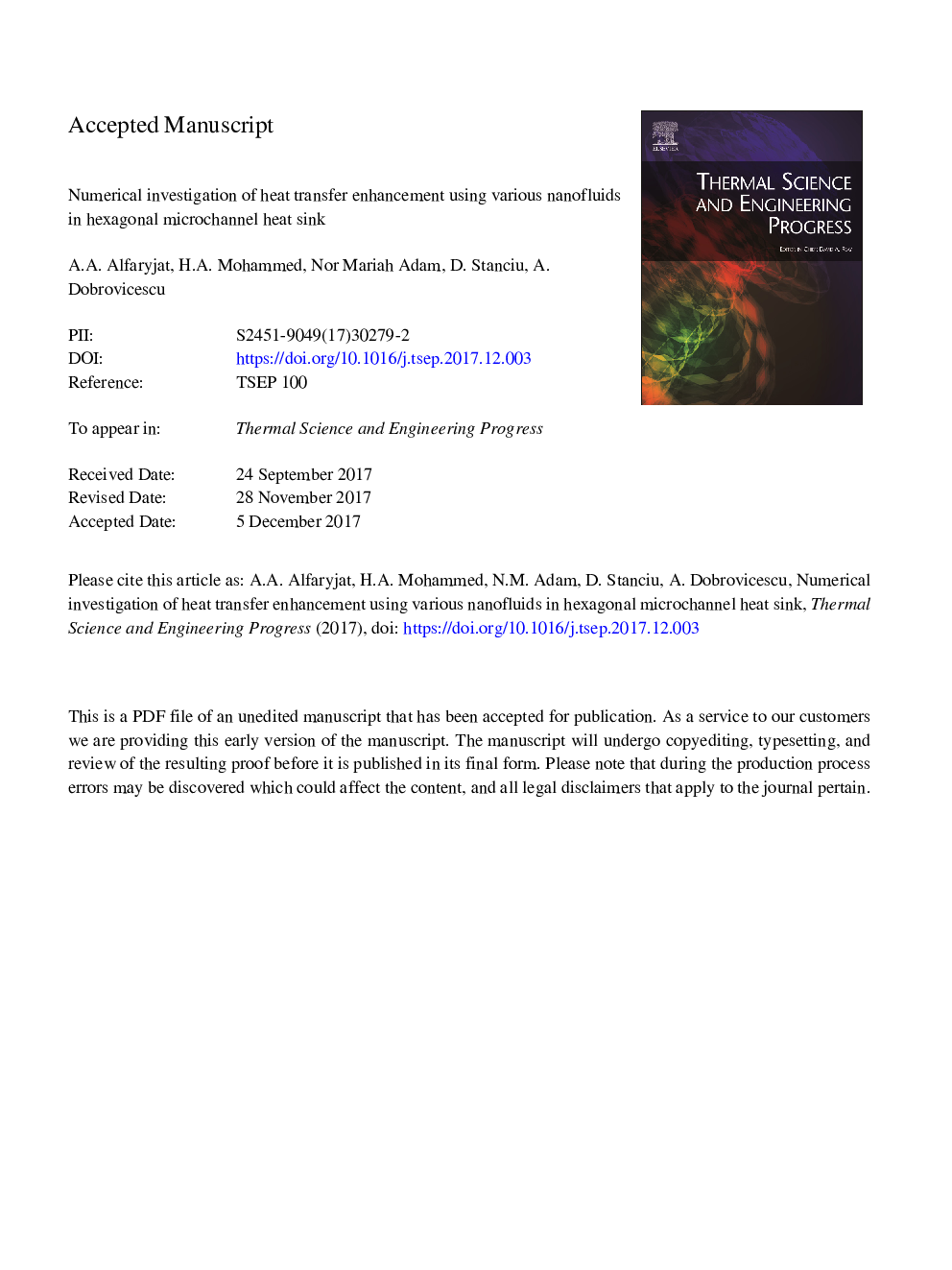| Article ID | Journal | Published Year | Pages | File Type |
|---|---|---|---|---|
| 8918782 | Thermal Science and Engineering Progress | 2018 | 30 Pages |
Abstract
This paper describes the numerical modelling of heat transfer and fluid flow characteristics for various types of nanofluids and water passing through a microchannel heat sink (MCHS). The microchannel heat sink is of hexagonal shape, with a hydraulic diameter, Dh, of 170â¯Âµm. In consideration of cases under cooling and heating, the heat flux is fixed to qwâ¯=â¯500â¯kW/m2. Water was used as the base fluid for various nanoparticles-i.e., Al2O3, CuO, SiO2 and ZnO- with different volume fractions and nanoparticle diameters. The results implied that nanofluids enhance the thermal performance of the microchannel heat sink by increasing the pumping power. It was also discovered that Al2O3-water shows the lowest readings in dimensionless temperature and thermal resistance, while displaying the highest in heat transfer coefficient. Thermal performances of the MCHS can be increased with an increase in volume fraction and by applying smaller particular diameter but at the cost of pumping power and pressure, which would then diminish the overall favourable effects. Ultimately, Al2O3-water with 4% volume fraction and 25â¯nm nanoparticles diameter is the favoured nanofluid through microchannel heat sinks and can be adopted in next generation cooling devices.
Related Topics
Physical Sciences and Engineering
Energy
Energy Engineering and Power Technology
Authors
A.A. Alfaryjat, H.A. Mohammed, Nor Mariah Adam, D. Stanciu, A. Dobrovicescu,
